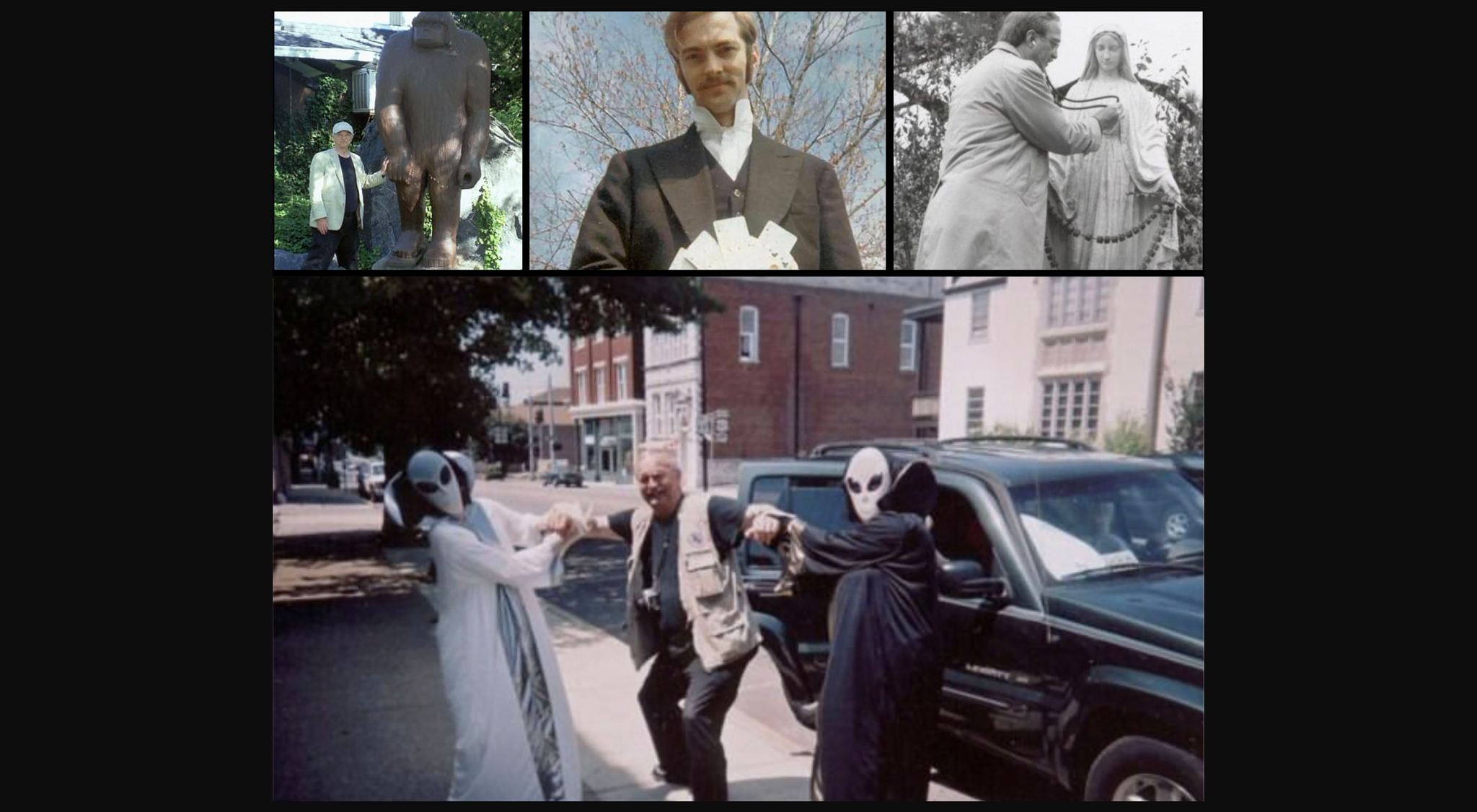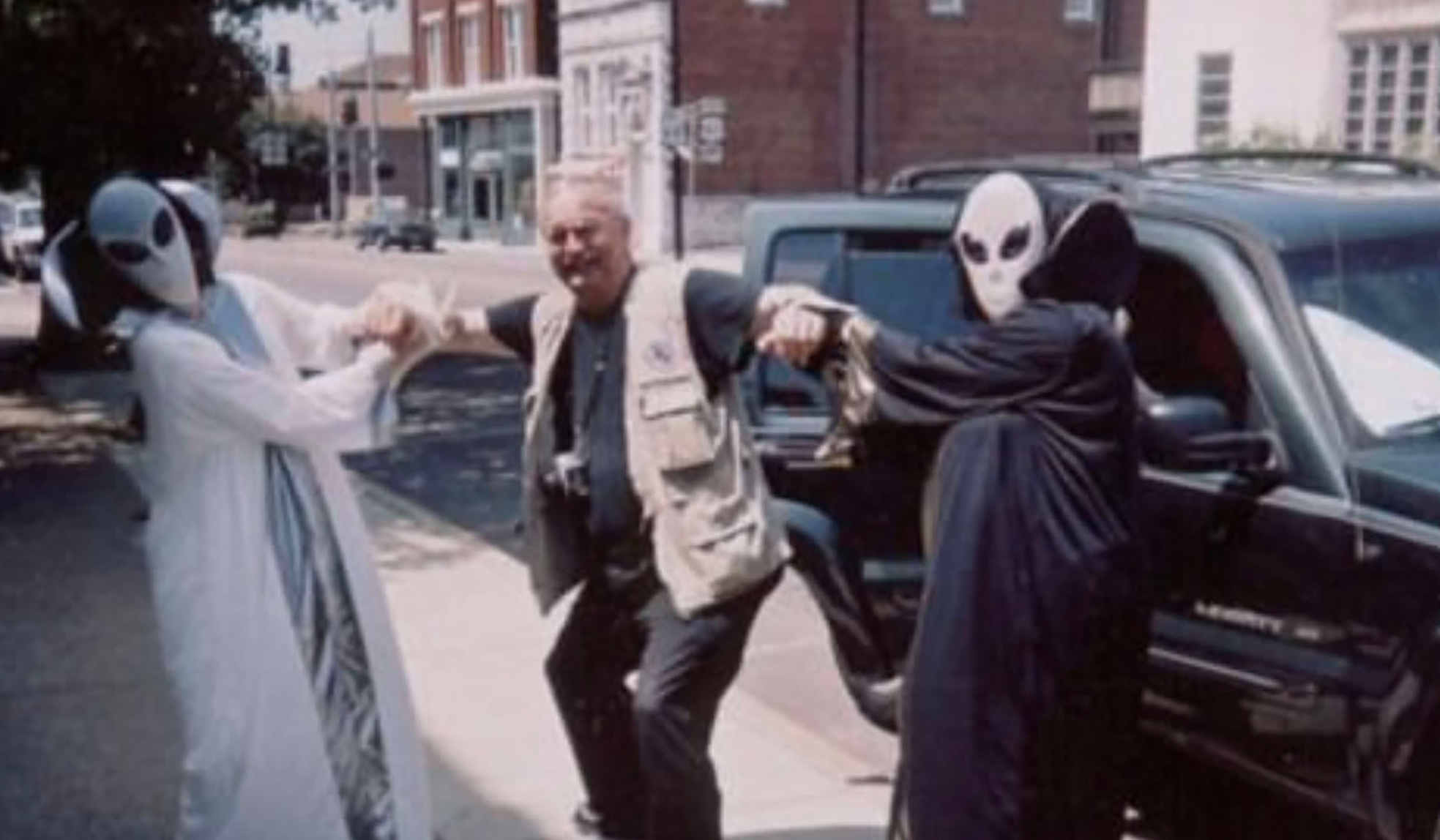




Photographs, via the Nickell family
As a paranormal investigator, Joe Nickell was in high demand, studying ghosts, the Loch Ness monster, crop circles and appearances of Jesus, including one on a tortilla.
His search for legendary creatures included Bigfoot, particularly in Bluff Creek, Calif., which was famous for a 1967 film that that purported to show the elusive creature walking in the forest.
He solved hundreds, perhaps even thousands, of mysteries, drawing skills from his previous work as a magician, which taught him how to deceive others.
At one point he traveled to Conyers, Ga., to debunk a rumor that the statues there had heartbeats.
He often addressed the subject of aliens — and had fun in the process. Here, he staged what he called an “abduction” by “aliens” in Kelly, Ky., the site of a supposed alien sighting.
Supported by
SKIP ADVERTISEMENT
Joe Nickell, Paranormal Investigator and ‘Real-Life Scully,’ Dies at 80
Before Joe Nickell became, in his words, “the world’s only full-time professional paranormal investigator,” he was:
a magician
a blackjack dealer
a private investigator
a poet
a bingo caller
a riverboat manager
a professor of literature
a carousel operator and
a calligrapher.
He listed roughly 1,000 more “personas” on his website.
“God help us if Nickell ever has an identity crisis,” he said a friend liked to joke. “There’ll be 20 of him running around not speaking to each other.”
Mr. Nickell (pronounced nickel) never feared such a crackup. He viewed his various personas as the many facets of a single personality that provided him with investigatory dexterity and made him “a sharp-tongued and amiably pompous old gumshoe,” as The New Yorker described him in a 2002 profile.
Working for the Committee for Skeptical Inquiry, a program run by the nonprofit group Center for Inquiry, and as a columnist for Skeptical Inquirer, the organization’s magazine, Mr. Nickell investigated ghosts, poltergeist activity, apparitions, the Loch Ness monster, crop circles and multiple reappearances of Jesus, including one on a tortilla.
Advertisement
SKIP ADVERTISEMENT
“Some of it is like satire,” Mr. Nickell told The New York Times in 1997, “almost like it’s reached a comic level.”
But in a career that made him notable in both low and high culture — he appeared on the tabloid program “The Sally Jessy Raphael Show” and published books with university presses — Mr. Nickell conducted his inquiries with a “kinder, gentler skepticism,” as he put it, than his contemporaries did.
Subscribe to The Times to read as many articles as you like.